Understanding your curl type is essential to loving your hair and taking proper care of it. Two textures that often get confused are 2C and 3A hair, one slightly wavy and the other forming soft ringlets. Although they seem similar at a glance, they behave very differently.
Whether you’re trying to decode your curl pattern or finding the right haircare routine, this guide from GoviHair will break down everything you need to know about 2C vs 3A hair, including how to style and care for each.
What Are 2C vs 3A Hair Types?
When it comes to caring for textured hair, one of the most valuable tools you can use is the curl typing system. Popularized by celebrity hairstylist Andre Walker, this classification helps people identify their natural hair pattern by assigning a number (1 through 4) and a letter (A through C). Each number corresponds to a general texture category, while the letter defines the intensity of the wave, curl, or coil.
Understanding the Curl Typing System
Type 1: Straight hair. It lacks any natural curl or wave, and usually lies flat against the scalp.
Type 2: Wavy hair. Falls between straight and curly, with a noticeable S-shape. It includes:
- 2A: Slight wave, often fine and easy to straighten
- 2B: Medium wave with some frizz and body
- 2C: Deep, defined S-shaped waves with more volume and frizz
Type 3: Curly hair. Features defined loops or ringlets and ranges from:
- 3A: Loose, springy spirals with a soft texture
- 3B: Tighter curls that may have a coarse feel
- 3C: Dense, tightly coiled curls with a lot of volume
Type 4: Coily or kinky hair. This hair type is very tightly coiled or zigzagged and often more fragile.
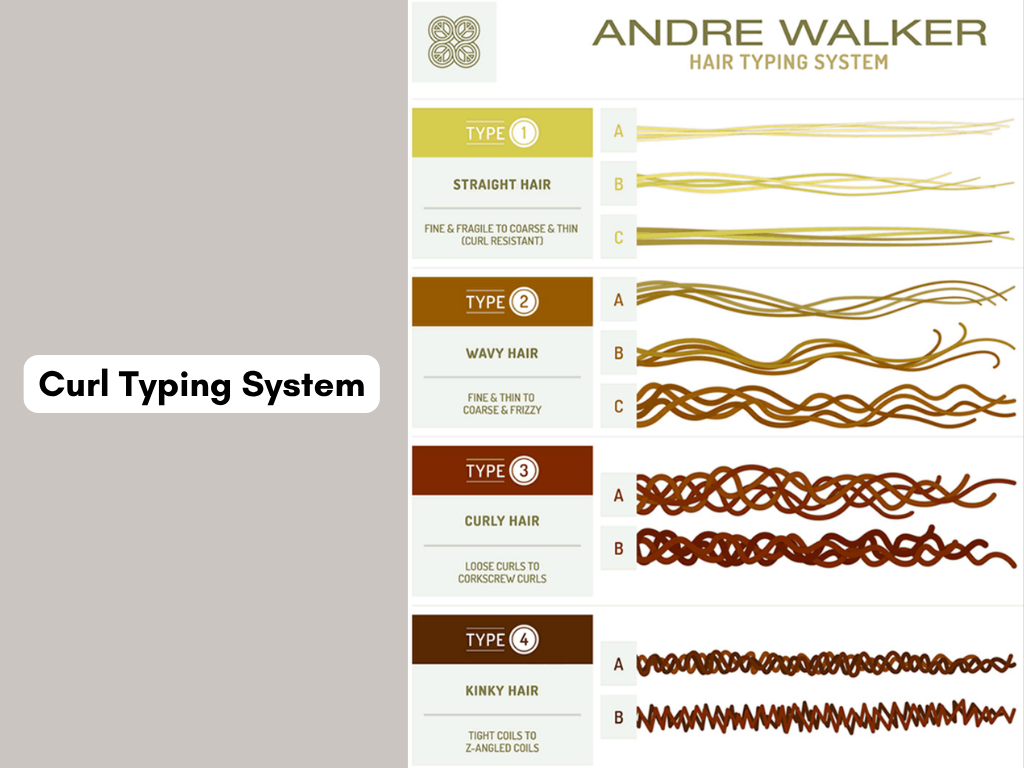
What Is 2C Hair?
2C hair is the most defined and textured form of wavy hair, sitting right on the borderline between wavy and curly. It’s often misunderstood, many people mistake it for loose curls because of its thickness, volume, and movement, but true 2C hair doesn’t form full spirals like curly hair. Instead, it features bold, flowing S-shaped waves that begin right at the roots and continue consistently to the ends.
Key Characteristics of 2C Hair
- Defined S-Waves from Root to Tip: Unlike 2A or 2B hair, 2C doesn’t need coaxing to show texture. The waves are strong and often form deep S-shapes throughout the length of the hair.
- Some Loose Curls: You might notice occasional spirals, especially on the ends or in the underlayers, but they’re not uniform enough to classify the hair as curly.
-
Thickness and volume differ: 2C hair often feels more textured and gritty than softer wave types. The strands are stronger and denser, which gives the hair body and structure.
- Prone to Frizz: Because of its coarse texture and open cuticle structure, 2C hair is highly reactive to humidity, making it frizz-prone if not properly moisturized and styled.
- Lacks True Curl Bounce: While voluminous, 2C waves don’t have the same “spring” or shrinkage as curls. The waves are looser and more elongated than spiral curls found in Type 3 hair.

What Is 3A Hair?
3A hair is the loosest curl type in the Type 3 category, marking the start of true curls in the hair typing system. It features springy, well-defined spirals that are full of movement and volume.
Key Characteristics of 3A Hair
- Spiral Curl Pattern: Curls form consistent, soft ringlets from root to tip.
- Medium Curl Diameter: Comparable to the width of sidewalk chalk or a large marker.
- Voluminous and Springy: Natural lift and bounce, often creating a full silhouette.
- Prone to Frizz and Dryness: Needs regular moisture to maintain curl integrity and reduce frizz.
- Visible Shrinkage: Hair appears shorter when dry due to the tight curl structure.
- Highly Versatile Texture: Responds well to a variety of curl-enhancing products and techniques.
Blending 2C and 3A: What Mixed Curl Types Look Like
Common Signs of 2C/3A Mixed Hair
- Waves at the Top, Curls Beneath: A typical pattern for 2C/3A hair is looser S-shaped waves at the crown or roots, especially where the hair is most exposed to brushing or the sun. As you move down or inward, the strands may tighten into spiral curls around the nape, behind the ears, or underneath layers.
- Ringlets Framing the Face, Waves at the Back: Many people notice well-defined 3A curls around the front and sides, often due to less manipulation and more moisture retention in these areas. Meanwhile, the back of the head might show softer 2C waves that stretch more and hold less definition.
- Inconsistent Porosity Zones: Mixed-texture hair often comes with varied porosity. Some sections may absorb moisture easily and dry fast (usually the finer or more exposed areas), while others stay frizzy or puffy, taking longer to dry and needing more product to hold shape.
Why Mixed Curl Types Matter
Understanding that your hair is a blend of 2C and 3A helps you customize your routine. One styling product or technique may not work for your entire head. For example:
- A lightweight mousse might be perfect for your wavy crown but not moisturizing enough for your tighter curls underneath.
- You may need to layer different products (e.g., curl cream + gel) on different sections to balance hold and hydration.
- You might use section-specific drying methods (like diffusing curls but air-drying waves) for more consistent results.
>> Explore More: Loose Wave vs Body Wave: Which Hair Should You Choose?
Key Differences Between 2C vs 3A Hair
When exploring 2C vs 3A curly hair, it’s important to note that 2C features more S-shaped waves, while 3A delivers spiral curls throughout, leading to different care routines. Here’s a quick breakdown of the key differences to help you identify your hair type and tailor your routine accordingly.
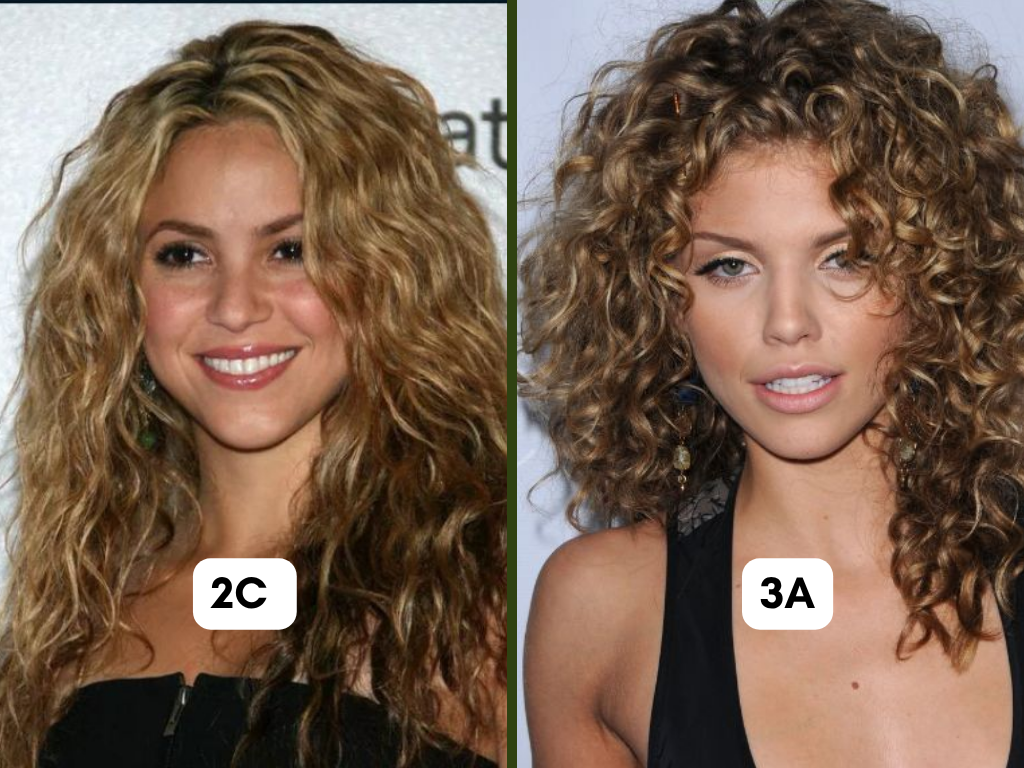
| Feature | 2C Hair | 3A Hair |
| Curl Pattern | Deep S-shaped waves, occasional loose curls near the ends | Defined spiral ringlets from root to tip |
| Texture | Thick, coarse strands with natural volume | Finer, softer texture with springy bounce |
| Volume | Naturally voluminous at the roots | Light, airy volume with shrinkage |
| Porosity | Low to medium; prone to buildup | Medium to high; absorbs moisture quickly but loses it fast |
| Frizz | Frizzes easily in humidity; loses wave definition without product | Can frizz but generally holds curl shape better with styling |
| Best Products | Lightweight mousse, anti-frizz spray, leave-ins | Curl creams, gels, and moisture-rich leave-ins |
>> Read More: Body Wave Vs Deep Wave: What Are The Differences?
Am I 2c Or 3a Hair Type?
If you’re struggling to identify whether your hair is 2C or 3A, you’re not alone. These two textures often overlap in appearance, especially when styling habits, product choices, and humidity come into play. However, there are a few reliable ways to distinguish between them.
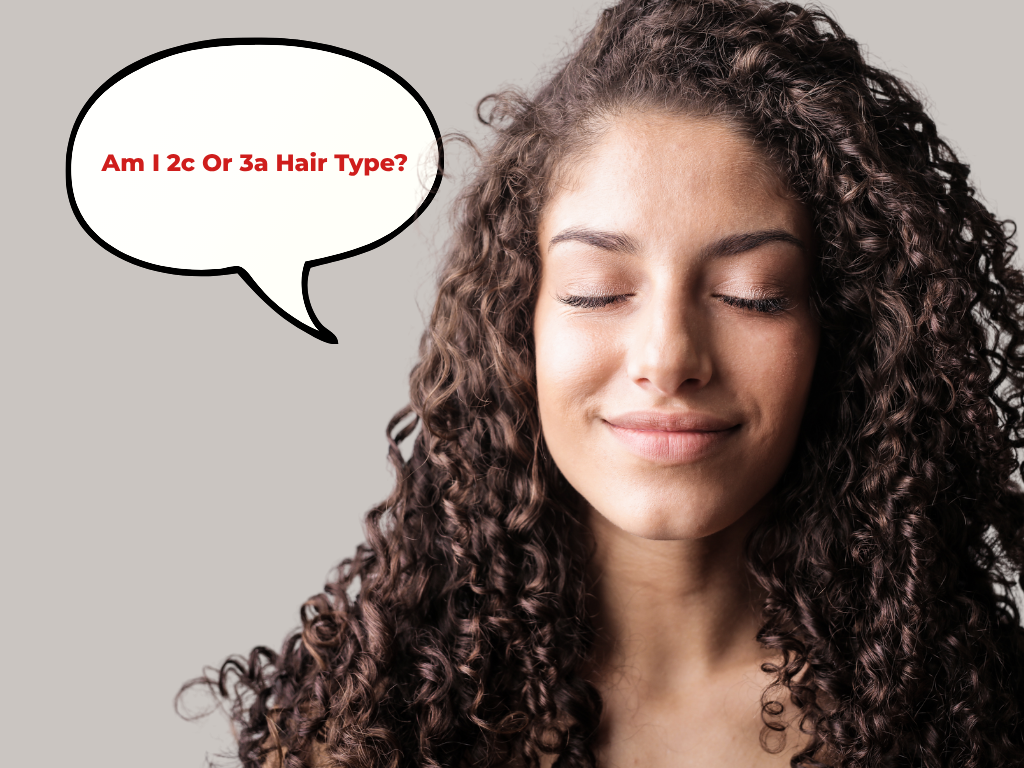
The Wet vs. Dry Test
One of the simplest ways to spot the difference between 2C and 3A hair is to observe how your hair behaves as it transitions from wet to dry.
- 2C Hair When Wet: Appears curlier due to the weight of water pulling the strands into defined waves or light curls. But as it dries, it typically settles into deep S-shaped waves, especially around the mid-lengths and ends. 2C shows minimal shrinkage, while 3A experiences visible shrinkage when drying
- 3A Hair When Wet: Forms visible, springy curls even while saturated. As it dries, these curls tighten into spiral ringlets, often bouncing up significantly. If your hair shrinks 25% or more when drying, it’s likely 3A.
Curl Diameter Comparison
Looking at the width of your curls is another practical trick for curl typing:
- 2C Waves: These tend to be wide and loose, often similar in size to your index finger or the handle of a makeup brush. The S-shape is soft and elongated.
- 3A Curls: These are more circular and springy, with a diameter close to sidewalk chalk, a highlighter, or even a large Sharpie. The ringlets are easily visible, especially in well-moisturized hair.
Common Hair Mistakes That Confuse Curl Type
- Using Too Much Product: Heavy creams or oils can weigh down 3A curls, making them look looser and more like 2C waves. Over-moisturizing can also cause wave/curl separation and frizz in 2C hair.
- Brushing Dry Curls: If you brush or comb 3A hair when dry, the defined curls can break apart, leading to puffiness and a wave-like texture that mimics 2C. Always detangle when wet with a wide-tooth comb or fingers.
- Improper Drying Techniques: Rubbing hair with a regular towel or using a blow dryer without a diffuser can disturb curl formation in both types. For accurate curl definition, air-dry or diffuse gently and avoid friction.
>> Read More: Deep Wave vs Water Wave: Which One Is Best for You?
Styling Ideas for 2C vs 3A Hair
Hairstyles for 2C Hair

Loose Beach Waves
This look plays perfectly to the strengths of 2C hair. When air-dried or diffused with a lightweight mousse, the natural S-shaped pattern becomes more pronounced. The result is a laid-back, tousled wave that feels effortless and chic. This style is ideal for everyday wear and gives volume without requiring heat styling or heavy manipulation.
Half-Up, Half-Down Twist
Ideal for days when you want your hair off your face but still flowing, the half-up twist allows your natural texture to shine while adding a little structure. Twisting back the top layers adds dimension and showcases the contrast between the crown volume and the softer waves below. It’s a great style for both casual outings and polished looks.
Braided Crown or Side Braid
For a touch of elegance, try a soft braid across the crown or along one side. These styles frame the face and control frizz while emphasizing the natural wave pattern. They’re especially useful on humid days or when you want to tame second-day hair without sacrificing beauty.
Hairstyles for 3A Hair
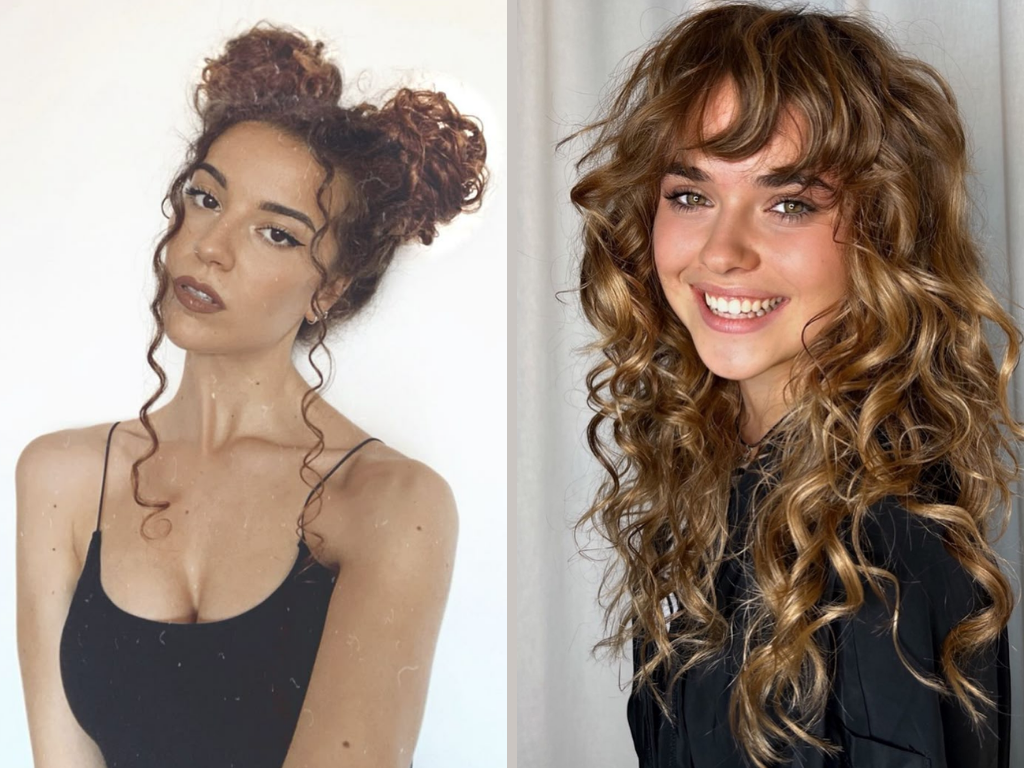
High Puff or Curly Ponytail
Gathering your curls into a high puff or ponytail instantly elevates your look. It keeps hair out of your face and puts your curl pattern on full display. The style also adds volume at the crown, creating a flattering silhouette that’s especially helpful on second- or third-day curls.
Layered Curly Shag
The curly shag is a standout cut for 3A curls. It layers curls to add volume and create shape, allowing your spirals to move freely without becoming too bulky. This haircut frames the face beautifully and offers great styling freedom, perfect for embracing the natural body of your curls.
Curly Space Buns
This playful style is ideal for festivals or casual weekends. By parting the hair and creating two buns, you control volume and reduce frizz while keeping your look trendy and youthful. The exposed curls in the buns add texture and make the style pop, especially on defined curls.
Hairstyles for 2C/3A Mixed Hair
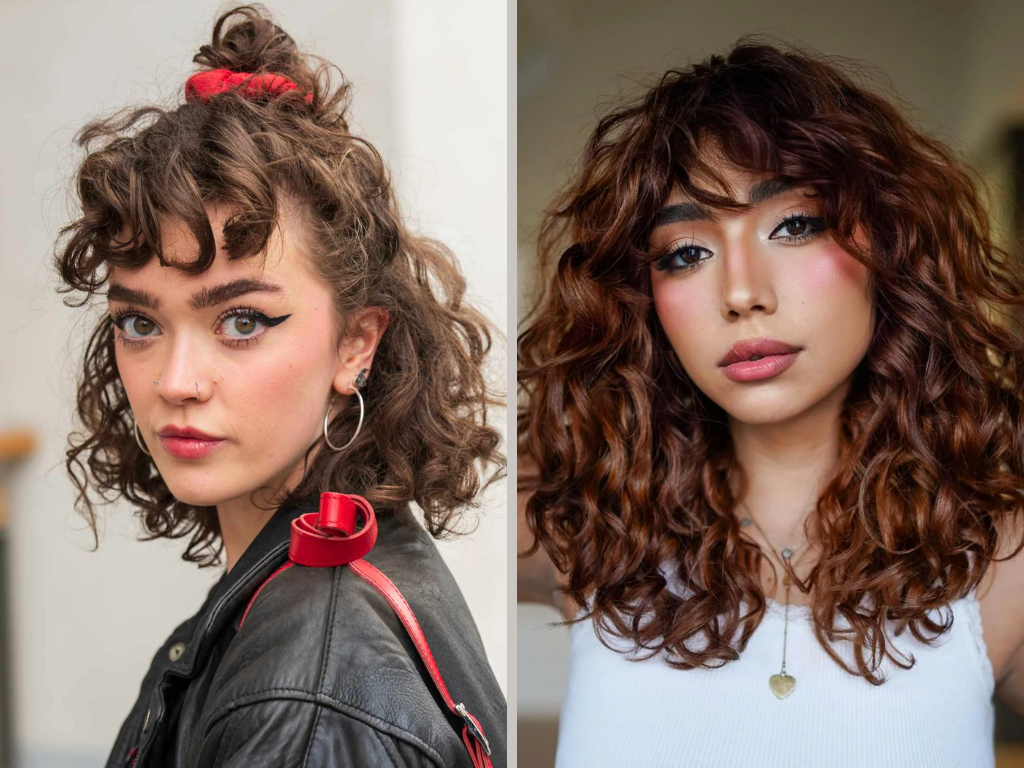
Curly Half-Up Bun
The half-up bun is a lifesaver for mixed textures. It allows the tighter curls and looser waves to blend without fighting each other. The top bun keeps hair off your face while the bottom layers flow freely, creating a flattering contrast in pattern and volume.
Clipped-Up Curly Bangs and Loose Length
Adding soft, curly bangs to the mix helps bring structure and balance to multi-textured hair. Clip or pin them up loosely for a retro vibe, while letting the rest of your hair fall naturally. It’s a fashionable way to show off both your curl and wave patterns.
Layered Shoulder Cut with Curtain Bangs
A shoulder-length haircut with curtain bangs works beautifully on 2C/3A hair. The length provides enough weight to reduce frizz while allowing bounce, and curtain bangs give your face soft framing without overwhelming finer textures. It’s a modern, versatile look for anyone blending curl patterns.
How to Achieve or Enhance 2C Hair

For Naturally Straighter or Less Textured Hair:
Heatless Styling:
- Create two French braids on damp hair and leave them overnight.
- Unbraid and gently separate with fingers to form natural S-shaped waves.
Twist-Out Technique:
- Twist damp sections using a lightweight mousse or curl cream.
- Let air dry or diffuse gently for enhanced definition and soft waves.
Heat Styling:
- Use a 1 to 1.25 inch curling wand to create loose curls.
- Alternate curl direction and lightly brush or scrunch to loosen curls into waves.
- Finish with sea salt spray or a humidity-resistant product for texture and hold.
For Naturally 2C Hair:
- Use a sulfate-free shampoo and a lightweight conditioner to maintain wave structure.
- Apply a curl-enhancing leave-in conditioner or light styling cream.
- Scrunch hair while damp and let it air dry or diffuse to avoid frizz and maintain volume.
How to Achieve or Enhance 3A Hair
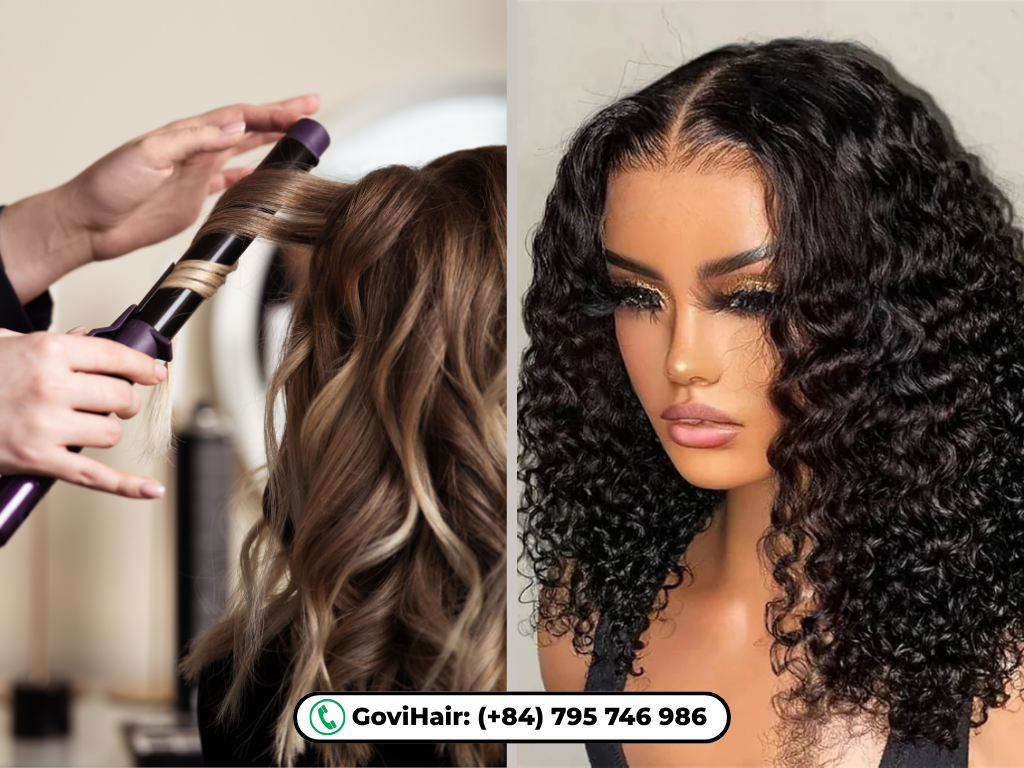
For Those with 2C
If your hair is naturally 2C, you can enhance your texture to mimic 3A curls using heatless methods or styling tools.
- Curling Tools or Flexi Rods: Start with damp, product-applied hair. Use curl creams or gels that provide hold and moisture. Wrap small sections of hair around flexi rods or a narrow curling wand. Allow the hair to dry completely, then gently separate the curls for added volume and bounce.
- Chemical Styling (Salon Options): A digital perm or traditional curly perm can transform 2C waves into semi-permanent 3A curls. This option works best for those ready to commit to a longer-term curl pattern, though it does require regular care and hydration.
- Temporary Texture Boost with GoviHair Wigs & Extensions: Not ready to commit? GoviHair offers premium curly human hair wigs and extensions that naturally replicate the look and feel of 3A curls. It’s the perfect way to test out this texture or add volume and length instantly, without heat or chemicals. Ideal for styling versatility or protective styling days.
>> Go Shopping: Govihair’s Premium Collections
Not Sure What You Need? Chat With Us:
- WhatsApp: (+84) 795 746 986
- Email: [email protected]
- Instagram: govihair_factory
- TikTok: govihairvietnam_official
- Website:govihair.com
For Naturally 3A Hair
To enhance and maintain your 3A curl pattern, focus on moisture, definition, and gentle techniques.
- Use a hydrating shampoo followed by a rich, moisturizing conditioner to keep curls soft and manageable.
- On soaking wet hair, apply a curl-defining cream or gel to lock in moisture and shape.
- Style using the rake-and-scrunch method to encourage curl clumping and enhance definition.
- Dry with a diffuser on low heat to maintain volume and reduce frizz.
- Deep condition weekly to replenish moisture and prevent dryness over time.
Can You Shift Between 2C vs 3A Hair?
Yes, your curls can temporarily change depending on technique, product, and styling approach.
If you’re working with 2C hair, techniques like finger coiling, tighter curl sets, or using curl-enhancing gels can create a 3A-like look. On the flip side, brushing out 3A curls or skipping heavy products can relax the curl pattern, giving the appearance of looser 2C waves. Hair texture is fluid, and its appearance can change based on porosity, humidity, styling habits, and overall hair health.

For days when you want a quick switch, 3A-texture wigs and extensions give you full control to express your style without compromising your natural hair.
Maintenance Tips for 2C vs 3A Hair
Wavy and curly hair textures need moisture, gentle care, and curl-friendly techniques, whether it’s your natural pattern or enhanced with textured wigs or extensions like those from GoviHair.
General Maintenance for 2C vs 3A Hair
- Skip sulfates and silicones to avoid dryness and buildup on natural hair and human hair extensions.
- Detangle wet with conditioner using fingers or a wide-tooth comb, start from the ends for wigs and weaves.
- Use a microfiber towel or T-shirt to blot excess water and reduce frizz.
- Avoid frequent heat styling; air-dry or diffuse on low heat, using a protectant if needed.
- Protect curls overnight with a satin bonnet or pillowcase. Store wigs properly to maintain curl shape.

2C Hair Care Tips
- Use lightweight products like mousse or sprays to avoid weighing down waves.
- Wash 2–3 times per week, clarifying monthly to prevent buildup.
- Apply anti-frizz serum on damp hair, including on curly lace wigs.
- Scrunch styling products into damp hair to boost wave definition and blend in curly clip-ins.
- Clarify before reinstalling extensions or after heavy product use.
3A Hair Care Tips
- Deep condition weekly to fight dryness and keep curls bouncy also applies to curly bundles.
- Use curl creams or gels on wet hair for definition and hold. Let wigs air-dry or diffuse gently.
- Wash once or twice weekly; co-wash in between. Clean wigs every 7–10 wears.
- Use the rake-and-scrunch method to define curls, even on curly halo or tape-in extensions.
- Refresh curls between washes with a water-based mist or diluted leave-in. Re-scrunch to revive shape.
Embracing Your 2C vs 3A Hair Journey With Govihair
Understanding the differences between 2C vs 3A hair is more than just labeling your curl type, it’s about learning how your unique texture behaves, what it needs, and how to bring out its natural beauty.
Whether your hair leans toward deep waves or defined spirals (or even a mix of both), embracing your curl pattern allows you to choose the right techniques, products, and styles for healthier, more confident hair days. Celebrate the versatility of your waves or curls, and let your natural texture shine with the care it deserves.









 Ms. Rosie
Ms. Rosie